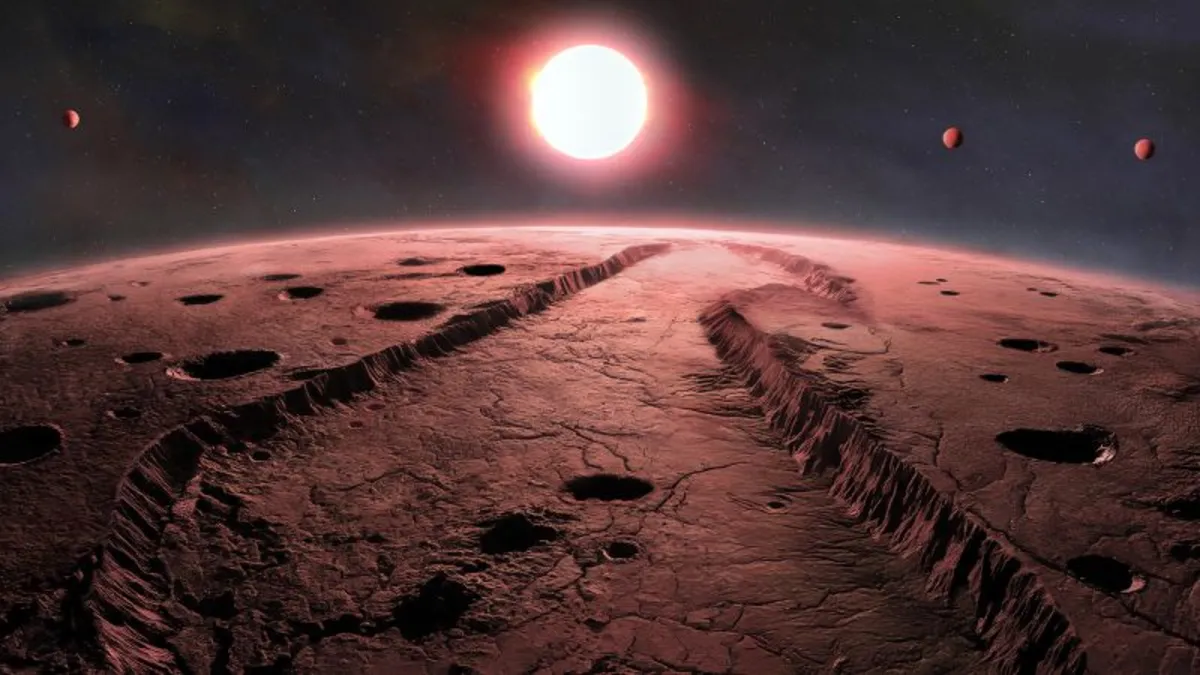
Sign up for CNN’s Wonder Theory science newsletter to explore the universe with updates on fascinating discoveries and scientific advancements. In an exciting breakthrough, astronomers have found compelling evidence of exoplanets orbiting Barnard’s Star, the closest single star system to Earth. This discovery includes four planets, each classified as sub-Earths due to their mass, which ranges from 19% to 34% that of our planet, according to recent research.
Lead study author Ritvik Basant, a doctoral student of astronomy and astrophysics at the University of Chicago, expressed enthusiasm about the findings, stating, “It’s a really exciting find — Barnard’s Star is our cosmic neighbor, and yet we know so little about it.” He emphasized that the precision of new astronomical instruments has marked a significant advancement compared to previous generations of tools.
Discovered in 1916 by American astronomer E.E. Barnard, Barnard’s Star is a low-mass red dwarf, one of the most common types of stars in our galaxy. Over the last decade, astronomers have noted that many of these stars host multiple rocky planets. The introduction of MAROON-X, an advanced instrument mounted on the Gemini North telescope in Hawaii, has facilitated the search for exoplanets orbiting red dwarfs.
MAROON-X utilizes the radial velocity technique to detect the subtle wobbles of stars caused by the gravitational pull of orbiting planets. This innovative approach led the research team to identify the least massive exoplanet ever discovered. They anticipate that this breakthrough will pave the way for uncovering additional sub-Earth exoplanets throughout the universe.
Interestingly, the study suggests that smaller exoplanets may exhibit a wider variety of compositions than their larger counterparts. The ability to detect more diminutive worlds using highly sensitive instruments could revolutionize our understanding of planetary formation and the potential for habitability.
The four newly discovered planets are notably small, with characteristics more akin to Mars than Earth. Basant explained that compared to our solar system, these planets orbit well within the distance of Mercury’s orbit, completing their orbits around Barnard’s Star in just a matter of days. The outermost planet orbits in less than seven days, while the innermost one completes its orbit in under three days.
However, the proximity of these planets to Barnard’s Star may render them inhospitable. Their close orbits likely result in surfaces that are too hot for habitability, placing them outside the habitable zone—the region where conditions are suitable for liquid water to exist on a planet's surface. According to Edward Guinan, a professor of astronomy and astrophysics at Villanova University, the young and active Barnard’s Star likely bombarded these planets with X-UV radiation, flares, and intense winds, leading to a probable absence of atmospheres and water.
Discovering planets of this size beyond our solar system is a significant advancement in astronomy. Basant remarked, “A lot of what we do can be incremental, and it’s sometimes hard to see the bigger picture. But we found something that humanity will hopefully know forever.” This sentiment exemplifies the excitement surrounding the study, which was published on March 11 in The Astrophysical Journal Letters.
While the Proxima Centauri system is the closest to our solar system at 4.25 light-years away, it consists of three stars circling one another, making Barnard’s Star the nearest single star system. The discovery of planets orbiting both of these closest star systems marks a significant milestone in exoplanet research.
The research team, led by Bean, gathered data from Barnard’s Star over 112 nights spanning three years. Their findings indicated three planets, with two having been previously suggested. The collaboration with another research team using the ESPRESSO instrument on the Very Large Telescope in Chile confirmed the existence of a fourth exoplanet, showcasing the effectiveness of precise astronomical tools.
The detection of these sub-Earth mass planets is a remarkable achievement for the next generation of astronomical instruments. MAROON-X has even transitioned from a temporary instrument to a permanent fixture due to its success. As Guinan noted, “Finally, real planets have been discovered around Barnard’s Star after several false alarms over the past 50 years.” This discovery opens the door for further exploration and understanding of planetary systems close to our own.